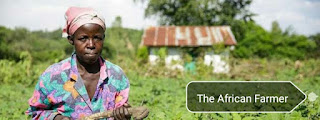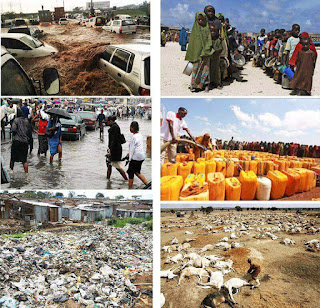Photo credit: Heifer
When most people think of agriculture in Africa, images of poor and overworked farmers with crude tools on a rural farm readily come to mind. Many, especially young Africans, still think that agribusiness is a poor man’s occupation. Nowadays everybody wants a white-collar office job in the city. Agribusiness is hardly on anyone’s mind.
Did you know that Africa sits on an agribusiness goldmine but most people just dont’t see it? If you’re one of the blind, allow me to open your eyes with a few exciting facts you need to know about agribusines in Africa…
Africa’s richest man, Aliko Dangote, recently invested $1 billion in rice production? Every year, Africa spends billions of dollars on rice imports, and Dangote wants a slice of the market.
Since 2009, investors in the USA, Europe, Middle East and Asia have been buying and leasing millions of hectares of African land for agricultural purposes? Many people may not know it but there’s a trend of serious land grabbing by foreign interests for African land.
Foreign Direct Investment in African agribusiness was $10 billion in 2010 and is projected to reach $45 billion by 2020? Agriculture is taking a huge leap in Africa and investors want a piece of the action too.
Africa’s agribusiness industry will be worth $1 trillion by 2030! That’s huge! If this projection by the United Nations comes true, agribusiness will become the ‘new oil’ in Africa!
In the light of these facts, the rich and wealthy folks are investing in Africa’s agribusiness industry while the majority of Africans are largely ignorant about the amazing potentials of agriculture on the continent?
Let me share with you five reasons why agriculture is the biggest business opportunity right now in Africa. And why many of the world’s top business people are investing in African agribusiness.
Photo: Design Indaba
1. Africa has cheap agricultural land
According to the World Bank, Sub-Saharan Africa is home to nearly 50 percent of the world’s fertile, usable and uncultivated agricultural land. The size: over 200 million hectares! The continent is now widely considered to be the future breadbasket of the world. It is this huge abundance of land resources that gives Africa the strategic potential to feed the world!
Most of Africa’s agricultural land lies in the savannah and tropical rain forest belt, which receives a favourable amount of rainfall and sunlight all year round. As a direct consequence, more than 80 percent of food crops consumed across the world can be produced here.
Interestingly, a large proportion of Africa’s agricultural land is located in the rural areas. That’s why they’re often cheap to buy or lease. On the average, one hectare of land (10,000sqm) can be leased for as low as $100 per year (depending on the location). This makes it one of the best land bargains you can find anywhere in the world!
2. Africa has a ready market and high demand for agricultural produce
Agribusiness is one of the best business opportunities in the world as food never goes out of fashion. People must eat food everyday!
Currently, Africa’s population is just over one billion people. At its current growth rate, the continent’s population is expected to reach 2.2 billion by 2050. Now and in the future, Africa will always have a lot of mouths to feed.
Africa currently spends billions of dollars every year to import grains, flour and all kinds of finished and semi-finished foods which it can produce locally. There is a huge opportunity for entrepreneurs who can provide cheaper and locally-grown alternatives to the food that Africa imports.
It’s not just the food industry that depends on agribusiness. Several other industries, especially the manufacturing and processing industries, depend on agribusiness for a wide range of raw materials. As Africa’s economies continue to grow, the demand for raw materials will surely increase and create more interesting opportunities for agribusiness on the continent.
3. Improved varieties and farm practices are changing the game across Africa
Agribusiness in Africa has suffered through the years because of its poor yields and crude farm practices. Most of the crops cultivated on the continent produce very little and are often very prone to pests, diseases and drought. As a result, most African farmers used to work very hard but have very little to show for all their hard work during harvest time.
However, due to advances in crop/animal science and technology, it is now possible to harvest more food per hectare than ever before in Africa’s history. There are now improved crop and animal varieties that mature earlier, require less resources, and are less susceptible to pest attacks, diseases and drought. Across Africa, these improved varieties are increasing yields by as much as 400 percent!
There are now improved and locally-adapted varieties of maize, cassava, millet, rice, sorghum, beans, sweet potato, cowpea, groundnut, soybean, pigeon pea, banana, durum wheat, and bread wheat.
There are also several local and international organisations that are focused on supporting African farmers with improved seedlings and support. One of such organisations is the Alliance for a Green Revolution in Africa (AGRA), launched by the Rockefeller Foundation and the Bill & Melinda Gates Foundation in 2006.
4. Agribusiness is very scalable.
You can start with what you have.
Whether you own one plot of land or 10,000 hectares, agribusiness is one of few business opportunities that allow you to start on any scale, with whatever you have!
Entrepreneurs like South Africa’s Anna Phosa started her agribusiness in 2008 in her backyard with just four pigs. Today, she owns a 350-hectare pig farm and is a major supplier to Pick n’ Pay, the South Africa supermarket chain.
The opportunity to start small means that people with little capital can become part of Africa’s multi-billion dollar agribusiness industry. Because of the guaranteed demand for agricultural produce, that small vegetable or poultry farm in your backyard could just become a huge business tomorrow.
Every evidence shows that you don’t have to be a wealthy investor with millions of dollars in the bank or a highly-educated person in order to start a business in agriculture in Africa. You can start where you are and use what you have, and grow from there. You can start your agribusiness journey in your home backyard or do it on a part-time basis with your day job. It’s very flexible that way!
5. Agribusiness is a huge job creator
Agribusiness is one of the most effective ways to create jobs and empower millions of Africans. At present, up to 60 per cent of the labour force in Sub-Saharan Africa is employed in the agribusiness industry. Agribusiness remains a top employer of labour in many African countries.
The value chain in the agribusiness industry, from food production, processing and marketing provide huge opportunities for employment and entrepreneurship.
So, if you’re looking to start a business or invest in an industry that makes a significant social impact, provides jobs and creates sustainable wealth, agribusiness is surely the way to go!
Africa is changing. You need to be a part of this big dream that’s finally coming true!












